7 Tips for Using Pronouns Without Offending Anyone

Making assumptions about other people’s gender can lead to correct answers, but it can also be potentially harmful to people who might not identify with he/she pronouns. Therefore, it is important to use someone’s correct personal pronouns when we refer to them, as this is a way to show respect and inclusion toward nonbinary, transgender, and intersex people.
5-Minute Crafts is here to help you understand gender-neutral pronouns and use them appropriately.
What personal pronouns are
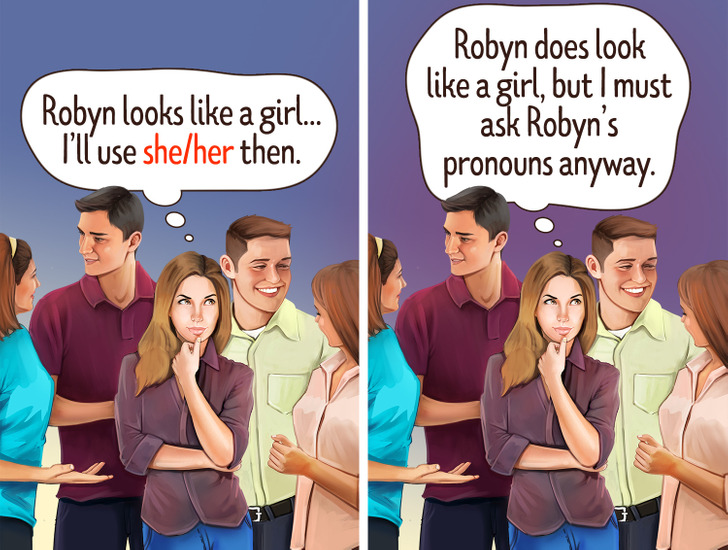
We use personal pronouns all the time in our everyday life, often without even being aware of them. When we speak about someone in the third person, we need to use a pronoun, which is, from a grammatical point of view, a part of speech implying the gender, like “she” for a woman, for instance. However, these associations do not always turn out to be accurate because they imply that we assume the gender of a person and express it through a pronoun, all based on the appearance or name of that person.
Step 1. If you still don’t know the person’s pronouns
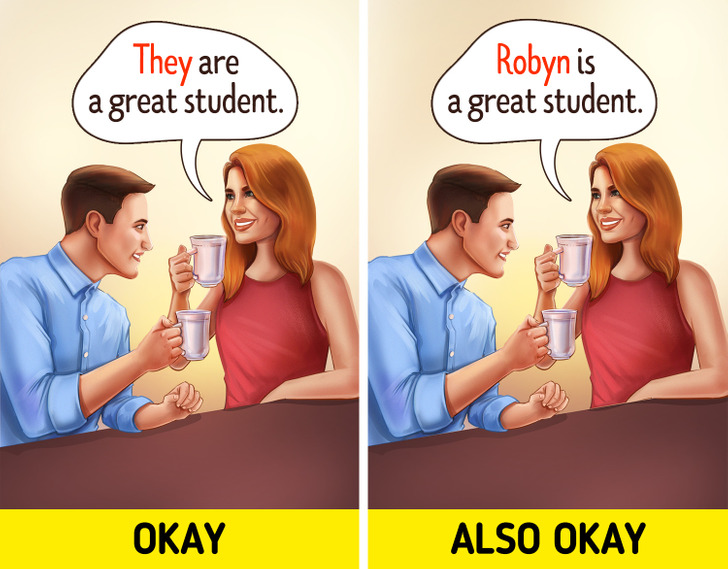
In case you still don’t know what pronouns a person goes by, you can usually use the set of pronouns “they/them,” as they are considered acceptable.
However, you can also avoid using pronouns altogether. This means you will always simply use the person’s name in needed forms. Here are some examples of this:
- “Robyn is a student.”
- “These books are Robyn’s.”
- “I like Robyn and Robyn’s friend.”
Here is an example with a reflexive component:
- “Robyn did this Robyn’s self/unassisted/without anybody’s help.”
Step 2. If the person shares the pronouns they go by
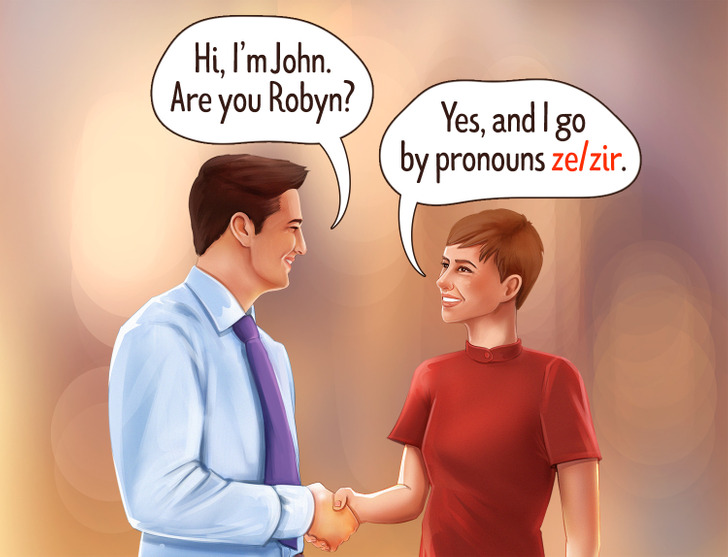
Sharing our pronouns means naming the ones we want used in the third-person singular. This is the form that we use when we refer to another person while talking to someone else.
❗ While for the majority of people, their pronouns coincide with their gender, remember that the person’s choice of pronouns doesn’t necessarily indicate their gender.
Step 3. The pronouns that don’t vary

Still, it’s important to mention that these pronouns are used in the third-person singular exclusively since other persons in singular stay the same. For example:
- First-person singular: “I did this myself. This book is mine. Did you see me and my friend?”
- Second-person singular: “You did this yourself. This book is yours. I saw you and your friend.”
Step 4. Pronouns in the third-person singular
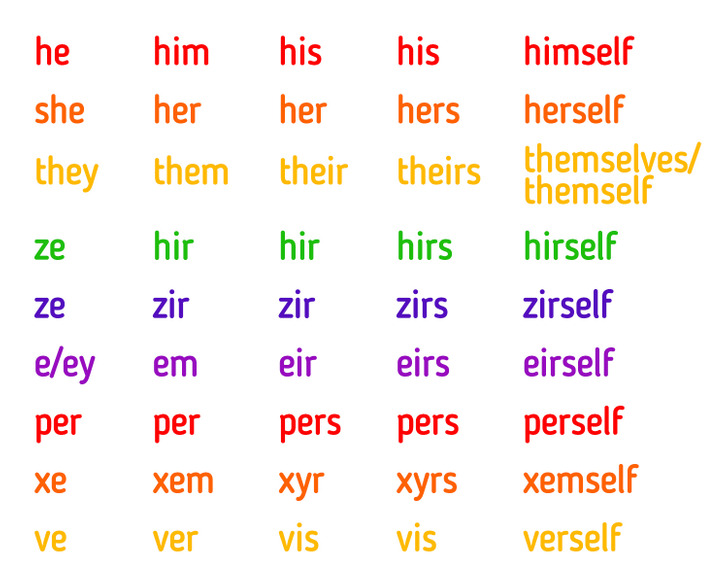
Let’s take a look at the pronouns that are usually chosen by a gender-neutral, transgender, or intersex person to be referred to as:
- She/her: “She is a student and did that herself. This book is hers. I like her and her friends.”
- He/him: “He is a student and did that himself. This book is his. I like him and his friends.”
- They/them: “They are a student and did that themself. This book is theirs. I like them and their friends.”
❗Please note that you should conjugate the verb “like” with the plural form of “they.” Also, both “themselves” and “themself” are acceptable forms.
- Ze/Hir: “Ze is a student and did that hirself. This book is hirs. I like hir and hir friends.”
❗ Note that the forms “ze” and “hir” are both pronounced with a long “e” (/i/). But some people prefer to go by “ze/zir” pronouns for consistency in usage.
❗There certainly are more sets of pronouns used by some people, like per/pers, ey/em, and so on. The best thing to do is to ask the person about how to use them or check the right way to use those pronouns online.
Step 5. Other factors to consider

When it comes to using gender-neutral pronouns, there are other factors to take into account:
- A person may use more than one set of pronouns. This means you can use any of the sets chosen by the person.
- A person may ask for variations in usage within sets of pronouns. Show that you’re willing to be supportive by asking the person to provide an example so that you can use them the right way.
Step 6. Titles and addressing a group of people
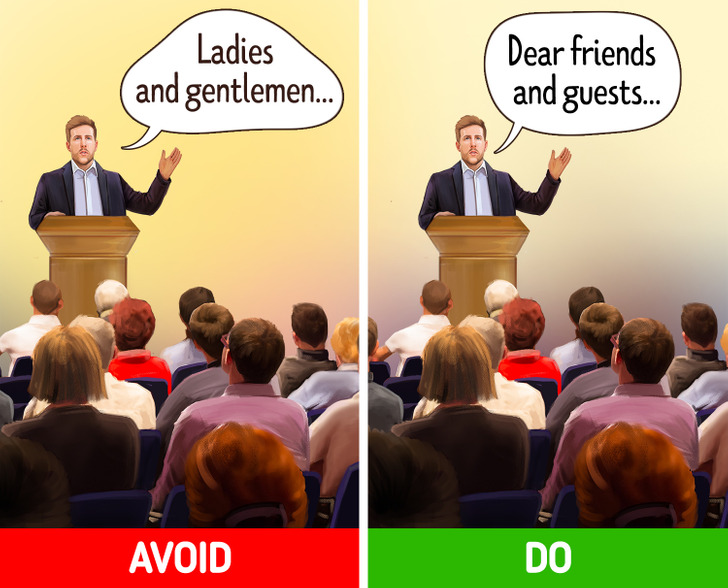
There are gender-neutral titles that can replace cisgender ones when you speak to a nonbinary person.
- For instance, you can use the form “Mx.” as a replacement for “Mr.” or “Ms.” It is pronounced like the word “mix.” But there are other forms as well, like “Ind.,” “Misc.,” “Msr.,” “Myr.,” “Sai.,” “Pr.,” and others.
- Also, if you want to talk to a group of people, instead of using “ladies and gentlemen,” you can use “friends and guests” and other generalizing forms, like “colleagues,” “folks,” “people of all genders,” and more.
Step 7. Common mistakes
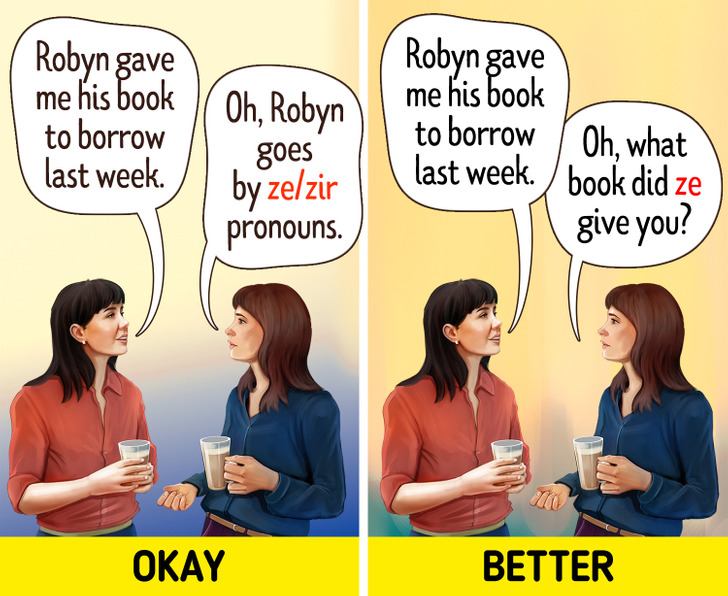
- You unintentionally make a mistake in pronouns while talking about Robyn, a nonbinary person, who goes by “ze/zir” pronouns. You then start apologizing so much that you immediately draw a lot of attention to it and end up making a big deal out of it. This is something you shouldn’t be doing. Just use the correct pronouns from that moment on or you can apologize later to Robyn and ask if there is something else you can do to correct it in the future.
- You talk about Robyn during a meeting and use the wrong pronouns without even realizing it. Later, you recognize your mistake and apologize to zir and promise you’ll make sure it won’t happen again. It’s better not to linger on it — just be more attentive next time.
- You’re talking with a friend about Robyn, a person you both know. Your friend says something about her, using incorrect pronouns. You can respond by emphasizing that Robyn uses “ze/zir” pronouns because it’s possible that ze never discussed it with your friend. However, it might be a better idea to respond in a more gentle way, like by using the correct pronoun and continuing the conversation.
- You make assumptions about people’s pronouns just because you’ve known them for a long time. However, you might not know whether these are still their pronouns. In this situation, you can start telling people what pronouns you go by yourself. That way, you’re working on creating a safe environment where other people can feel comfortable sharing their pronouns.